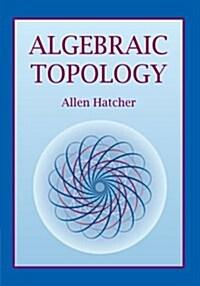책 이미지

책 정보
· 분류 : 외국도서 > 기술공학 > 기술공학 > 건축공학 > 난방/통풍/냉난방
· ISBN : 9789811652448
· 쪽수 : 142쪽
· 출판일 : 2021-09-17
목차
Part 1 Outdoor Thermal Comfort in Urban Planning and Design of High-density Cities
1. Characteristics of Thermal Comfort in Outdoor Environment
1.1 Urban Climate
1.2 Impacts of Urban Geometry
1.3 Urban Living Environment
1.4 High-density Urban Planning and Design
1.5 Objectives of This Book
Part 2 Subjective Evaluation of Outdoor Thermal Comfort
2. Human Thermal Comfort in Sub-tropical Urban Environment
2.1 Introduction
2.1.1 Outdoor Thermal Comfort Studies in the World
2.1.2 Objectives of the Study
2.2 Methodology
2.2.1 Micro-meteorological Measurements
2.2.2 User Questionnaire Survey
2.2.3 Statistical Analysis
2.3 Determination of the Neutral Physiological Equivalent Temperature (nPET)
2.3.1 Relationship between Meteorological Parameters and Subjective Thermal Sensation
2.3.2 Neutral Physiological Equivalent Temperature
2.3.3 The Need for Wind in High-density Urban Settings
2.4 Implications on Urban Planning and Urban Geometry Design
2.4.1 Reduction in Solar Heat Gain
2.4.2 Improving Thermal Load
2.4.3 Increasing Urban Air Ventilation
2.5 Conclusions
References
3. Dynamic Response of Pedestrian Thermal Comfort under Outdoor Transient Conditions
3.1 Introduction
3.1.1 Transient Thermal Conditions
3.1.2 Non-steady State Thermal Comfort Models
3.1.3 Objectives of the Study
3.2 Experimental Design
3.2.1 Survey Campaign
3.2.2 Mobile Meteorological Measurements
3.3 Results of the Study
3.3.1 Meteorological Conditions
3.3.2 Spatio-temporal Variations of Physiological Equivalent Temperature and Subjective Thermal Sensation
3.3.3 Effect of Urban Geometry on Thermal Comfort
3.4 Understanding the Dynamic Nature of Pedestrian Thermal Comfort
3.4.1 Rate of Changes of Thermal Sensation
3.4.2 Thermal History of Subjects
3.4.3 Thresholds of Thermal Discomfort
3.5 Implications on Urban Geometry Design
3.5.1 Rhythm of Human Thermal Sensation
3.5.2 Diversity of Urban Geometry
3.6 Conclusions
References
4. Environmental Perception and Outdoor Thermal Comfort in High-density Cities
4.1 Introduction
4.1.1 Psychological Aspects of Thermal Comfort
4.1.2 Variability of Outdoor Environment
4.1.3 Objectives of the Study
4.2 Data and Methodology
4.2.1 Study Sites
4.2.2 Questionnaire Survey
4.2.3 Micro-meteorological Measurements
4.2.4 Regression Analysis
4.3 Regression Models
4.3.1 Subjective Thermal Sensation and Comfort
4.3.2 Regression Models for Perceived Environmental Quality
4.3.3 Model Evaluation
4.4 Implications on the Design of Pedestrian Environment
4.4.1 Significance of Environmental Quality in Human Thermal Sensation
4.4.2 Outdoor Environmental Quality in Neighbourhood Assessment
4.5 Conclusions
References
Part 3 Computer Modelling of Outdoor Thermal Comfort
5. Numerical Modelling of Mean Radiant Temperature in High-density Cities
5.1 Introduction
5.1.1 Urban Geometry and Shading
5.1.2 Measurements and Modelling of Mean Radiant Temperature
5.1.3 Objectives of the Study
5.2 Data and Methodology
4.2.1 Study Area
4.2.2 SOLWEIG Model and Input Data
5.3 Modelling Results
5.3.1 Performance of the SOLWEIG Model
5.3.2 Spatial Variation of Mean Radiant Temperature
5.3.3 Temporal Changes of the Spatial Pattern of Mean Radiant Temperature
5.3.4 Identification of Heat Stress Area
5.4 Conclusions
References
6. Urban Greening Strategies for Enhancing Outdoor Thermal Comfort in High-density Urban Areas
6.1 Introduction
6.1.1 Challenges in Climatic Planning for Urban Greenery in High-density Cities
6.1.2 Urban Morphology and Greenery in Urban Environment
6.1.3 Objectives of the Study
6.2 Data and Methodology
6.2.1 Study Area and Field Measurements
6.2.2 Testing Variables and Model Initialization
6.2.3 Case Studies
6.3 Modelling Results
6.3.1 Field Measurements and Model Validation
6.3.2 Spatial Variation of Mean Radiant Temperature
6.3.3 Results of Parametric Study
6.3.4 Case Study 1: The SVF-based Planning Method
6.3.5 Case Study 2: Site-specific Climatic Design Strategies
6.4 Potential Applications in Urban Planning and Design Strategies
6.4.1 Greening Master Plans for Designated Urban Districts
6.4.2 Urban Heat Island Mitigation Strategies
6.5 Conclusions
References
7. Impact of Shadow-cast and Tree Species on Neighbourhood Outdoor Thermal Comfort
7.1 Introduction
7.1.1 Background
7.1.2 Urban Geometry and Street Tree Planting
7.1.3 Objectives of the Study
7.2 Methodology
7.2.1 Study Framework
7.2.2 Model Description, Initialization and Validation
7.2.3 Experimental Setup and Parameterization
7.3 Results of Parametric Study
7.3.1 Impact of Shadow-cast Only on In-canyon Thermal Comfort Improvement
7.3.2 Effect of Tree Species on Thermal Comfort Improvement in Open Area
7.3.3 Effect of Tree Species on In-canyon Thermal Comfort Improvement
7.3.4 Impact of Shadow-cast on In-canyon Tree Potential for Thermal Comfort Improvement
7.4 Discussion and Design Recommendations
7.4.1 Recommended Street Tree Planting Strategies
7.4.2 Design Study in Realistic Neighborhood
7.5 Conclusions and Future Work
References
Part 4 Applications of Outdoor Thermal Comfort in Urban Planning and Design Framework
8. Urban Climatic Map: Thermal Comfort as the Synergizing Indicator
8.1 User’s Wind Comfort Level Survey
8.1.1 Survey Design
8.1.2 Data Analysis
8.2 Defining the Wind Standard for Outdoor Thermal Comfort
8.2.1 Neutral Physiological Equivalent Temperature for Summer
8.2.2 Wind Standard in Sub-tropical High-density Cities
8.3 Collating Layers of Urban Climatic Map
8.4 Sustainable Building Design Guidelines
9. BEAM Plus Neighbourhood: A Rating Tool for Sustainable Communities
9.1 Background of the BEAM Plus Assessment Framework
9.2 Outdoor Environmental Quality: Outdoor Thermal Comfort
9.2.1 Assessment Criteria
9.2.2 Assessment Methods
9.3 Selected Accredited Projects
10. Epilogue:?




























